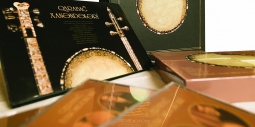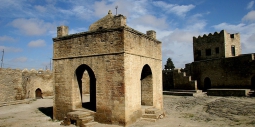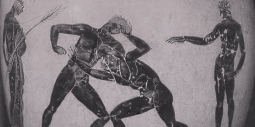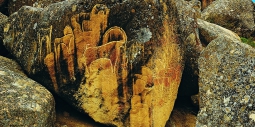The golden heritage of Azerbaijan
The roots of fine arts in Azerbaijan go back to ancient times. Artists of the past depicted people and animals in a highly artistic way. Their drawings reflected the dynamics of ritual dances and hunting scenes. Numerous cave paintings of Gobustan testify to the fact that ancient artists, as part of their rituals, learned to abstract magic images that were generally forbidden to depict.
Unique in their beauty and production techniques, vessels depicting scenes of bringing sacrifices to gods, portraits of the rulers of the country, musicians, etc. were excavated on the territory of present day Azerbaijan (the state of Manna, IX-VII centuries BC). According to famous Russian art critic Lukonin, the art of the neighbouring countries originated in the territory of Manna. He writes: "The art of the territory served as the foundation for the formation of the art of the Skiffs, the Midians and the Persians. On the one hand, the period represented by the monuments of Zivie, is interesting, due to the fact that the final stage of a recently discovered civilization can be determined by observing the examples of the monuments, and on the other hand, due to its linkage with the initial stage of the art of the Skiffs and the first art monuments of the Persians".
With the development of the art of books in the medieval centuries, Azerbaijan became one of the main centres for the art of book miniatures in the Muslim East. The first ever miniatures in the Middle East were created in the Azerbaijani towns of Khoe, Maragha and Tabriz under the Azerbaijani Atabeys (the Ildegezids) late in the XIV and early in the XV centuries. Later, at the art workshops of the Azerbaijani states of Garagoyunlu, Aghgoyunlu and the Safavids, a unique and original school of book miniatures, that made a big contribution to the treasury of the world art culture, prospered. German scientist F. Shultz called the Azerbaijani (Tabriz) Miniature School of the XIV-XV centuries the Alma mater of many art schools of the East.
Although at its initial stage the Azerbaijani miniature developed under the influence of the Mesopotamian and Turkic-Uygur arts, by the XVII century, the trends of the European arts were observed not only in the miniatures, but also in other arts. Starting from the XIX century and after the integration of the Northern part of Azerbaijan with Russia, the above-mentioned process was reflected in the wall decorations of palaces and houses, and in machine art.
Palaces and houses in Tabriz, Erevan, Shusha, Khoe and Sheki were decorated in this new manner, and magnificent portraits of Azerbaijani nobles were made in Iran and Azerbaijan (Iravani , Garabaghi, Allahverdi Afshar, Mir Ali, Muhammad Hasan Afshar and many others). The first professional artists - followers of the European-Russian school (Ibrahim Safi, Bahruz Kangarli, Azim Azimzadeh and many others) appeared on the scene. Starting from 1920, a professional art education system, newly introduced to Azerbaijan, began to develop. A new school of Azerbaijani art was established. Having passed a difficult road from social realism to vanguard, having organically melded the traditions of the East and West, a bright artistic phenomenon reached its maturity on the eve of the new century. The names of Tahir Salahov, Toghrul Narimanbeyov, Rasim Babayev, Sattar Bahlulzadeh, Mikail Abdullayev, Nadir Abdurahmanov, Javad Mirjavadov, Ashraf Muradoghlu, Tofik Javadov, Gorkhmaz Afandiyev, Muslim Abbasov, Kamal Ahmad, Altay Sadykhzadeh, Gayyur Yunus and many others are well known far outside Azerbaijan.






